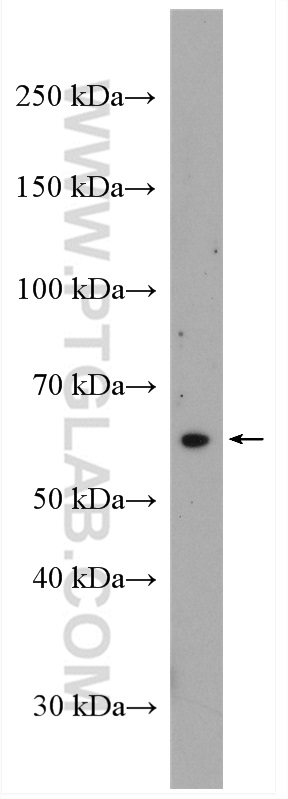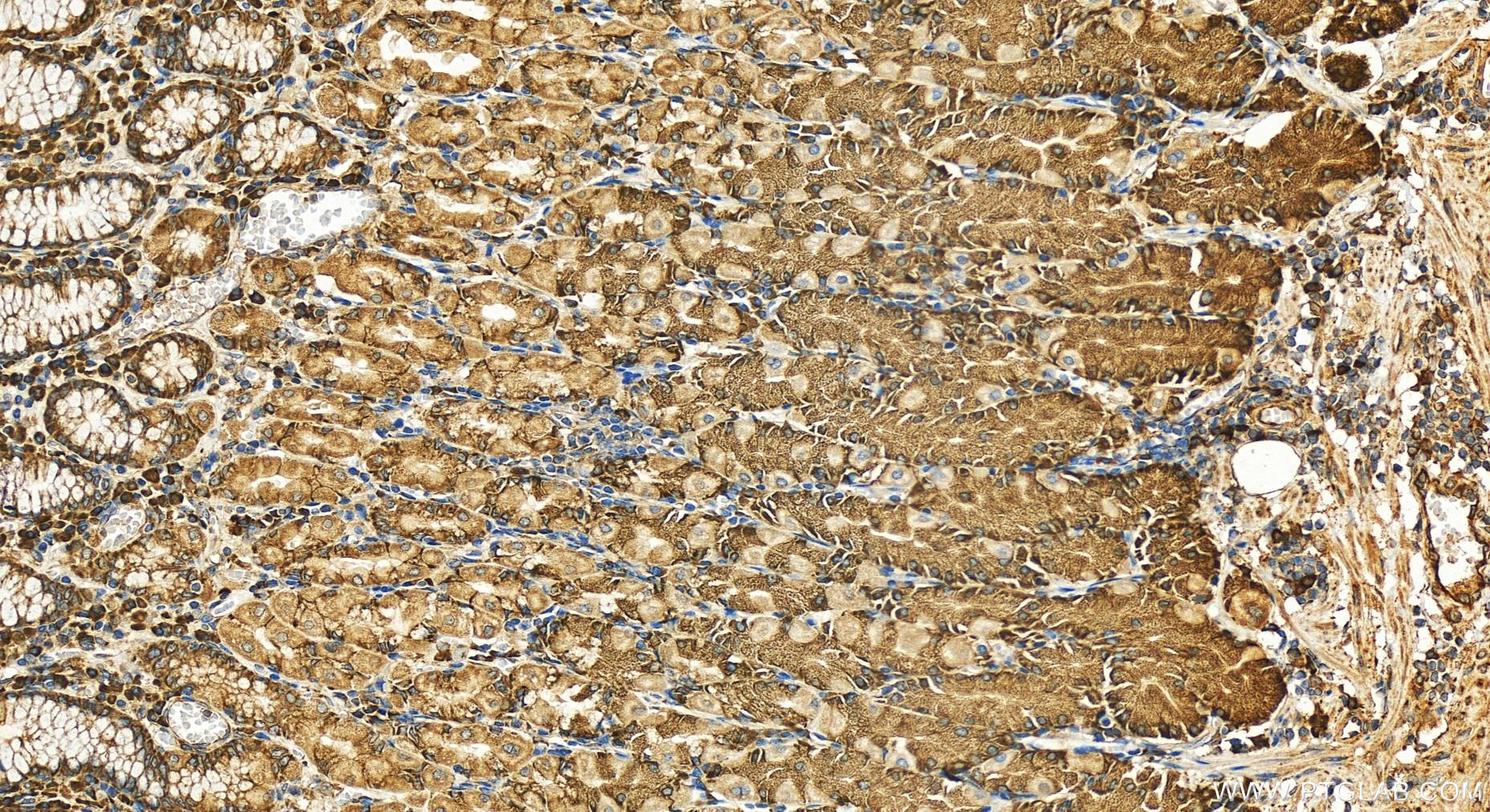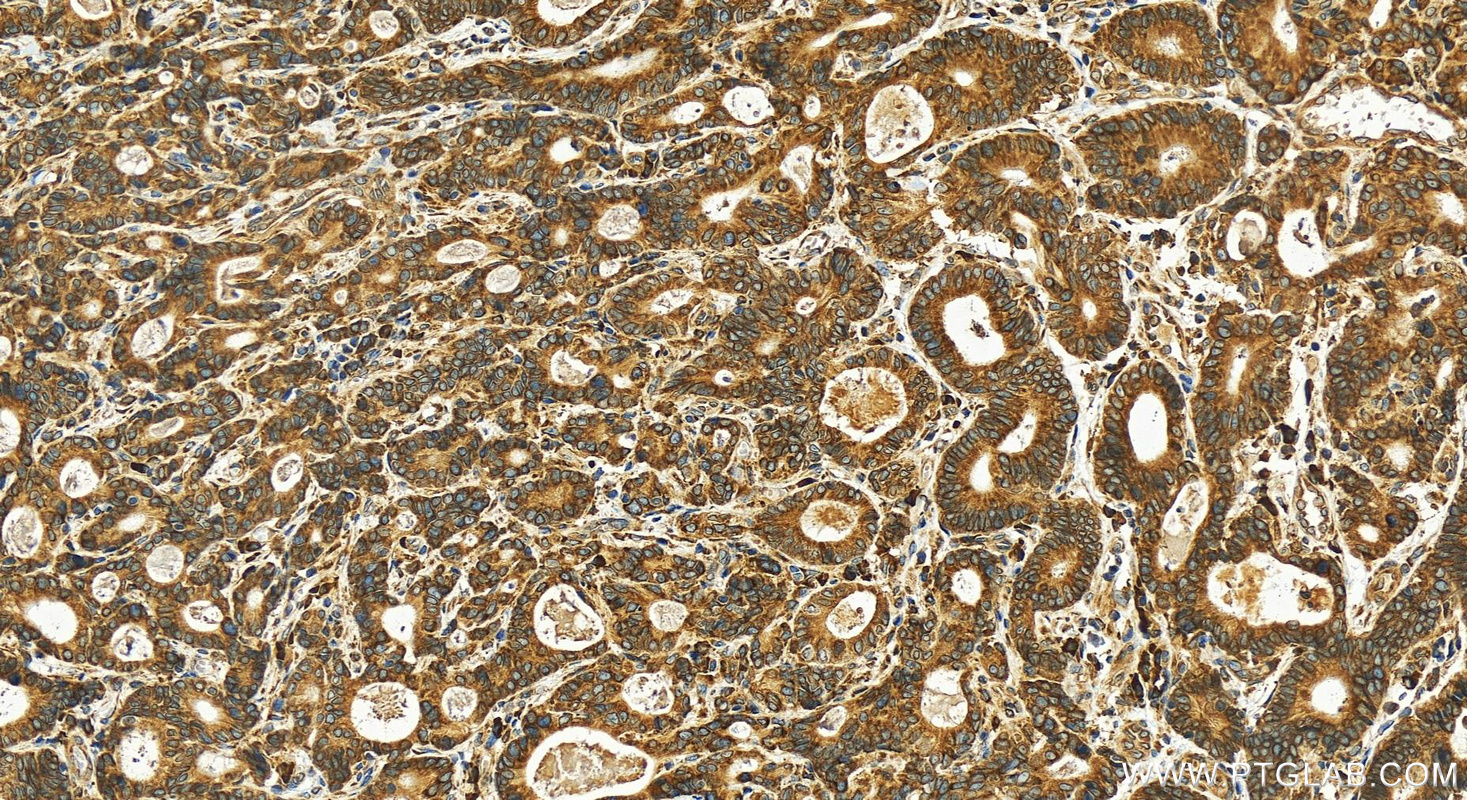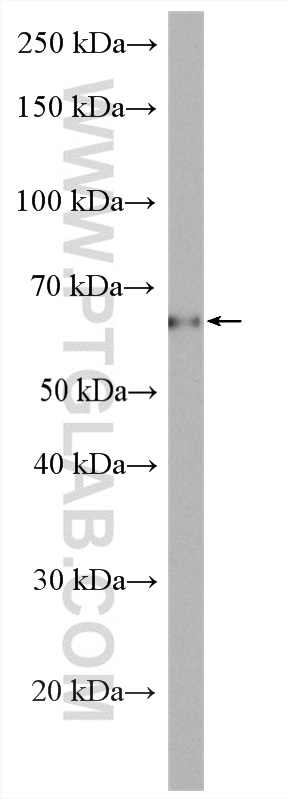验证数据展示
经过测试的应用
| Positive WB detected in | HepG2 cells, K-562 cells |
| Positive IHC detected in | human stomach tissue, human stomach cancer tissue Note: suggested antigen retrieval with TE buffer pH 9.0; (*) Alternatively, antigen retrieval may be performed with citrate buffer pH 6.0 |
推荐稀释比
| 应用 | 推荐稀释比 |
|---|---|
| Western Blot (WB) | WB : 1:500-1:1000 |
| Immunohistochemistry (IHC) | IHC : 1:50-1:500 |
| It is recommended that this reagent should be titrated in each testing system to obtain optimal results. | |
| Sample-dependent, Check data in validation data gallery. | |
产品信息
12034-1-AP targets STT3A in WB, IHC, IF, IP, CoIP, ELISA applications and shows reactivity with human samples.
| 经测试应用 | WB, IHC, ELISA Application Description |
| 文献引用应用 | WB, IHC, IF, IP, CoIP |
| 经测试反应性 | human |
| 文献引用反应性 | human, mouse, rat |
| 免疫原 |
CatNo: Ag2698 Product name: Recombinant human STT3A protein Source: e coli.-derived, PGEX-4T Tag: GST Domain: 475-705 aa of BC020965 Sequence: STWVTSEAYSSPSIVLSARGGDGSRIIFDDFREAYYWLRHNTPEDAKVMSWWDYGYQITAMANRTILVDNNTWNNTHISRVGQAMASTEEKAYEIMRELDVSYVLVIFGGLTGYSSDDINKFLWMVRIGGSTDTGKHIKENDYYTPTGEFRVDREGSPVLLNCLMYKMCYYRFGQVYTEAKRPPGFDRVRNAEIGNKDFELDVLEEAYTTEHWLVRIYKVKDLDNRGLSRT 种属同源性预测 |
| 宿主/亚型 | Rabbit / IgG |
| 抗体类别 | Polyclonal |
| 产品类型 | Antibody |
| 全称 | STT3, subunit of the oligosaccharyltransferase complex, homolog A (S. cerevisiae) |
| 别名 | B5, Dolichyl-diphosphooligosaccharide--protein glycosyltransferase subunit STT3A, EC:2.4.99.18, Integral membrane protein 1, ITM1 |
| 计算分子量 | 705 aa, 81 kDa |
| 观测分子量 | 65-100 kDa |
| GenBank蛋白编号 | BC020965 |
| 基因名称 | STT3A |
| Gene ID (NCBI) | 3703 |
| RRID | AB_2877818 |
| 偶联类型 | Unconjugated |
| 形式 | Liquid |
| 纯化方式 | Antigen affinity purification |
| UNIPROT ID | P46977 |
| 储存缓冲液 | PBS with 0.02% sodium azide and 50% glycerol, pH 7.3. |
| 储存条件 | Store at -20°C. Stable for one year after shipment. Aliquoting is unnecessary for -20oC storage. |
背景介绍
STT3A, also named as Dolichyl-diphosphooligosaccharide--protein glycosyltransferase subunit STT3A, is a 705 amino acid prtein, which belongs to the STT3 family. STT3A is expressed at high levels in placenta, liver, muscle and pancreas, and at very low levels in brain, lung and kidney. STT3A is a catalytic subunit of the N-oligosaccharyl transferase (OST) complex which catalyzes the transfer of a high mannose oligosaccharide from a lipid-linked oligosaccharide donor to an asparagine residue within an Asn-X-Ser/Thr consensus motif in nascent polypeptide chains. N-glycosylation occurs cotranslationally and the complex associates with the Sec61 complex at the channel-forming translocon complex that mediates protein translocation across the endoplasmic reticulum (ER). SST3A seems to be involved in complex substrate specificity. STT3A is present in the majority of OST complexes and mediates cotranslational N-glycosylation of most sites on target proteins, while STT3B-containing complexes are required for efficient post-translational glycosylation and mediate glycosylation of sites that have been skipped by STT3A.
实验方案
| Product Specific Protocols | |
|---|---|
| IHC protocol for STT3A antibody 12034-1-AP | Download protocol |
| WB protocol for STT3A antibody 12034-1-AP | Download protocol |
| Standard Protocols | |
|---|---|
| Click here to view our Standard Protocols |
发表文章
| Species | Application | Title |
|---|---|---|
Cancer Discov Pharmacologic Suppression of B7-H4 Glycosylation Restores Antitumor Immunity in Immune-Cold Breast Cancers.
| ||
Nat Chem Biol Oligosaccharyltransferase inhibition induces senescence in RTK-driven tumor cells. | ||
Mol Cell Proteomics Thyroglobulin Interactome Profiling Defines Altered Proteostasis Topology Associated With Thyroid Dyshormonogenesis | ||
Cell Mol Gastroenterol Hepatol Mettl14-Mediated m6A Modification Facilitates Liver Regeneration by Maintaining Endoplasmic Reticulum Homeostasis. | ||
MBio Dengue Virus Hijacks a Noncanonical Oxidoreductase Function of a Cellular Oligosaccharyltransferase Complex. | ||
EBioMedicine Targeting conserved N-glycosylation blocks SARS-CoV-2 variant infection in vitro.
|






